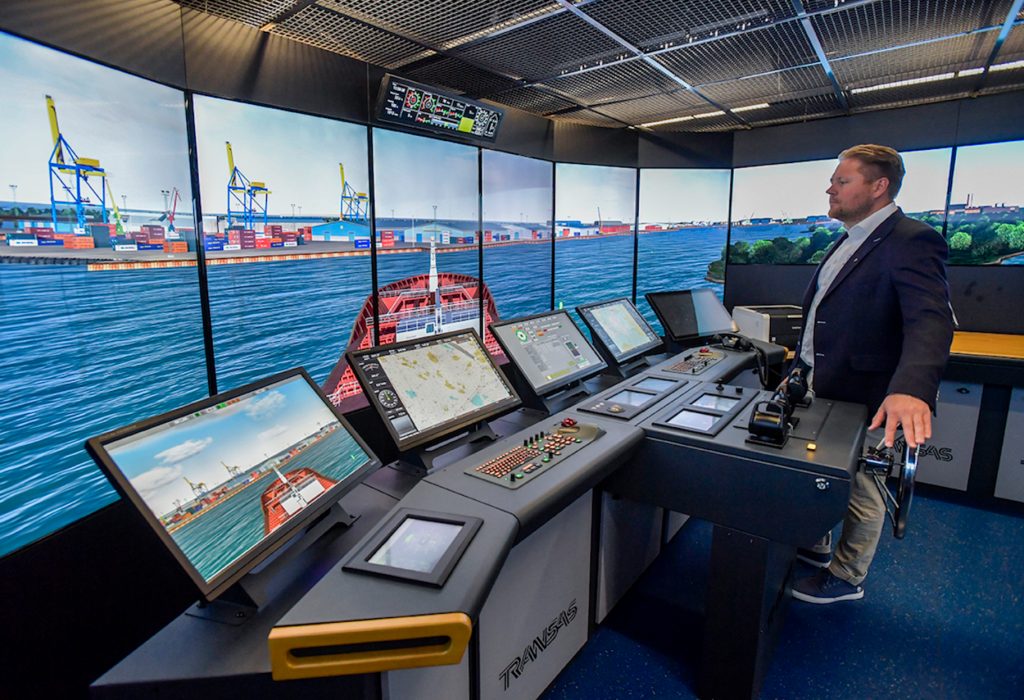Maritime education is going through radical change
Marko Löytökorpi, Master Mariner and Maritime Senior Lecturer, is involved in the ISTLAB project. His role is to determine how the knowledge gained from the project can be utilised in teaching and in pedagogical processes.
Text: Tytti Wallenius, Kumppania | Photo: Pekka Lehmuskallio

Radical change. This is how Marko Löytökorpi, Master Mariner, describes the status of maritime education. With a long career at sea and as a Maritime Senior Lecturer, Löytökorpi has a solid understanding of what is happening in the field. He is currently employed at WinNova Länsirannikon Koulutus Oy Ltd, while also teaching students at Satakunta University of Applied Sciences.
" Maritime is a fast-developing field, requiring vigilance from educators and students alike.
– We are at the point where old meets new. The education is governed by the standards specified by the International Maritime Organization (IMO). Education is quite slow to react to the winds of change, Löytökorpi explains.
Maritime is a fast-developing field, requiring vigilance from educators and students alike. With the aid of the ISTLAB project, we can offer students and teachers glimpses into the future of maritime.
The ISTLAB test laboratory - new data for education
Maritime education is based largely on outdated theoretical knowledge, but on the other hand, simulators are also being utilised more than before. Simulators bring us one step closer to intelligent shipping, which according to Löytökorpi will impact the future of the whole industry.
In addition to intelligent shipping, sustainable development and greener technology are among the topical issues that are currently surfacing.
– In addition to intelligent shipping, sustainable development and greener technology are among the topical issues that are currently surfacing. Although these topics cannot yet be seen in the curricula specified by the IMO, we can raise the subjects in our own work and already start to discuss them with the students.
ISTLAB has not yet become part of the students’ everyday work. As the project progresses, we can however already take advantage of the knowledge gained in the ISTLAB test laboratory in the studies. At least one doctoral thesis is currently being prepared on the subject, and more theses will certainly be forthcoming as the project progresses further.
– I hope we can involve the students in the test laboratory tests already during the project. The teachers will also have the opportunity to take advantage of the test laboratory in their work and in teaching, says Löytökorpi.
ISTLAB in-brief
The aim of the project is to create a smart joint-use Intelligent Shipping Technology test Laboratory (ISTLAB), which will merge and consolidate the navigation simulator of Satakunta University of Applied Sciences, the Finnish Transport and Communications Agency’s bathymetric model of the Rauma deep-water fairway, Finnish Transport Infrastructure Agency’s smart buoy and sea current monitoring, the Finnish Geospatial Research Institute’s navigation system research and the Finnish Meteorological Institute’s survey of wave, sea level and ice conditions. The technology group Wärtsilä has delivered a navigation simulator and specific mathematical models.
SHARE ARTICLE
Subscribe for Maritime newsbulletin!
Do you want current information about Satakunta University of Applied Sciences' maritime projects, research and education?
